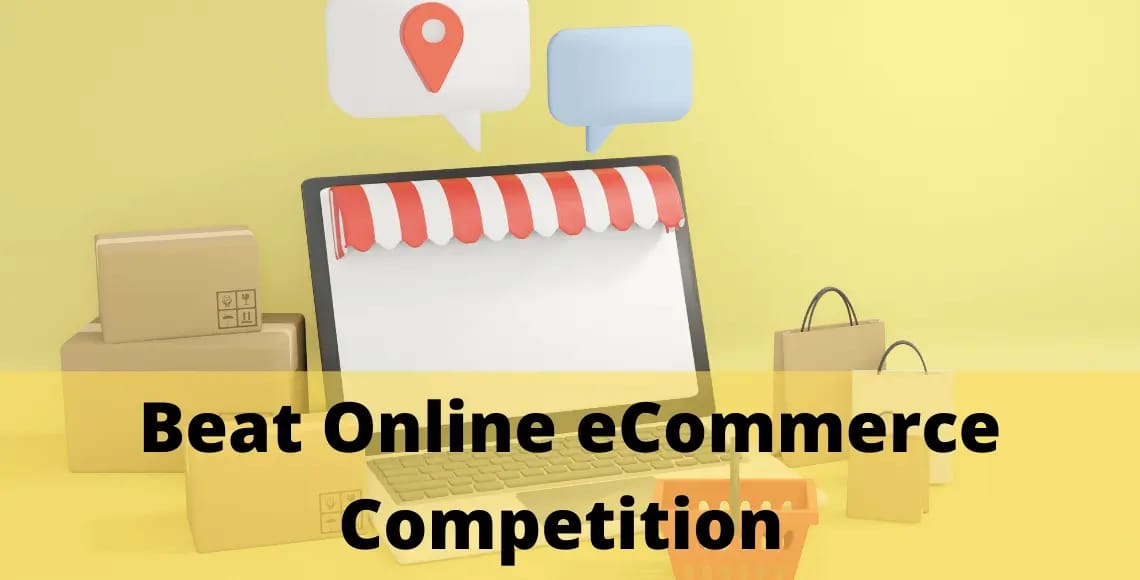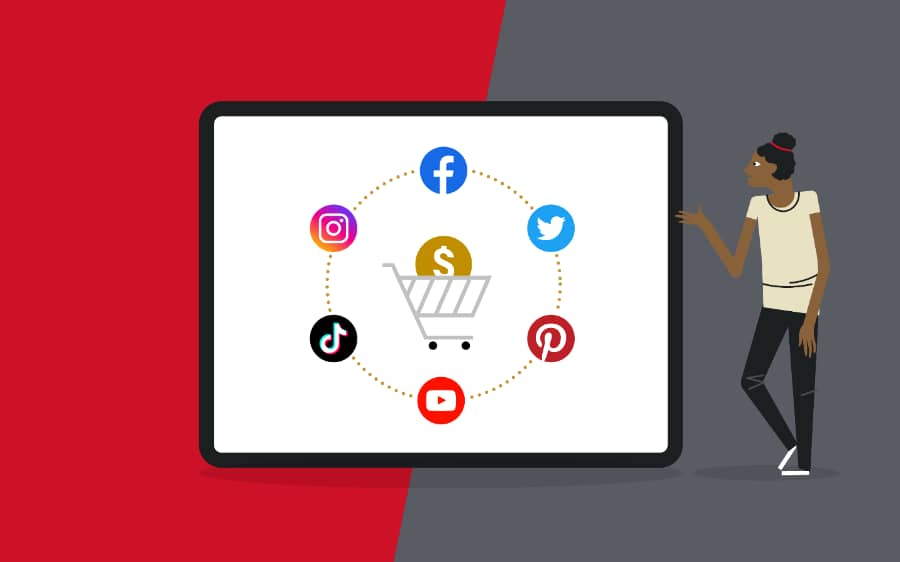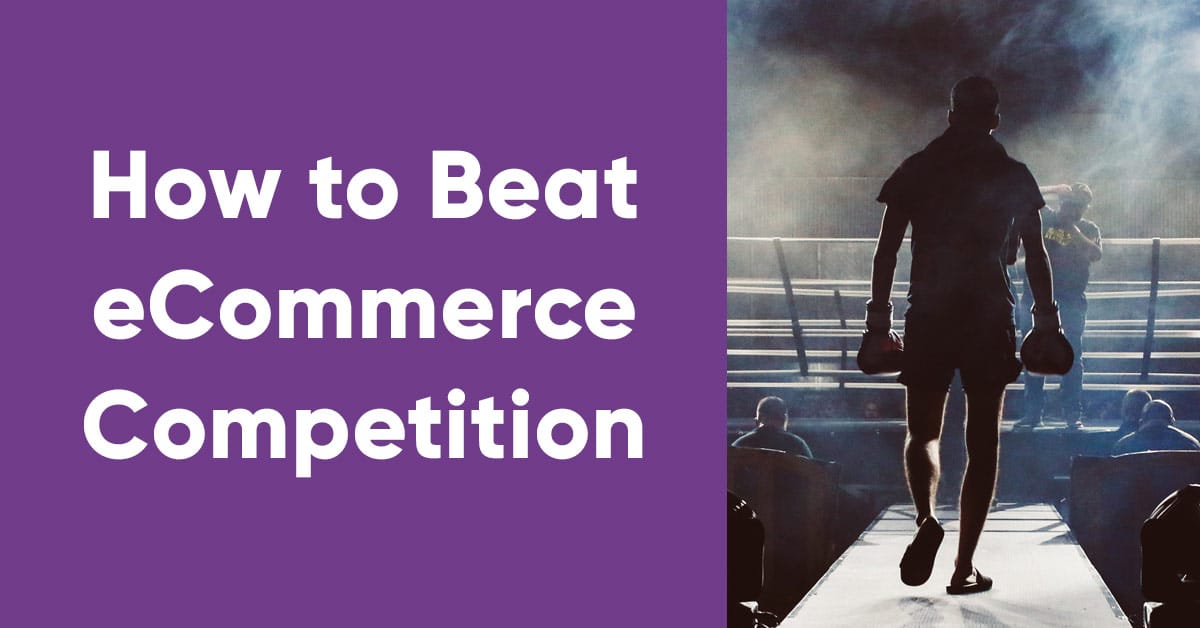The e-commerce industry is one of the fastest-growing and most competitive sectors in the world. According to Statista, global e-commerce sales are expected to reach $6.3 trillion by 2023, up from $4.2 trillion in 2020. However, with more than 24 million online stores operating worldwide1, it is not easy to stand out and succeed in this crowded market. In today’s rapidly evolving digital landscape, the e-commerce industry has become fiercely competitive. With numerous players vying for customer attention and market share, standing out from the crowd is essential for sustained success. This article presents a comprehensive guide on how to tackle competition in the e-commerce industry, providing you with actionable strategies to gain a competitive edge and thrive in this challenging environment.

How can you tackle the competition and gain an edge in the e-commerce industry? Here are some strategies that can help you achieve your goals:
Key Takeaways:
- Develop a strong brand identity to differentiate yourself from competitors.
- Prioritize exceptional customer experiences to stand out in a crowded market.
- Utilize data analytics to gain insights into customer behavior and optimize strategies.
- Optimize search engine visibility through effective SEO techniques.
- Embrace omni-channel selling to reach a wider audience and maximize sales potential.
- Leverage the power of social media for brand engagement and promotion.
- Foster a culture of continuous innovation and adaptation to stay ahead of the competition
1. Identify and target your niche market
One of the most effective ways to tackle the competition is to identify and target a specific niche market that has a high demand and low supply of products or services. By focusing on a narrow segment of customers, you can offer them a unique value proposition that meets their needs and preferences, and that differentiates you from your competitors. You can also build a loyal and engaged customer base that trusts your brand and advocates for it.
To identify and target your niche market, you need to conduct thorough market research and analysis, using tools such as Google Trends, Keyword Planner, and Social Mention. You also need to understand your target audience’s demographics, psychographics, pain points, and buying behavior, using tools such as Google Analytics, Facebook Insights, and SurveyMonkey. Based on your findings, you can create a customer persona that represents your ideal customer, and tailor your products, prices, promotions, and placements accordingly
2. Optimize your website for user experience and conversions
Your website is your online storefront, and it plays a crucial role in attracting, engaging, and converting your visitors into customers. Therefore, you need to optimize your website for user experience and conversions, by ensuring that it is fast, responsive, secure, easy to navigate, and visually appealing. You also need to provide clear and compelling content, such as product descriptions, images, videos, testimonials, and reviews, that showcases the benefits and features of your products or services, and that persuades your visitors to take action.
To optimize your website for user experience and conversions, you need to use tools such as Google PageSpeed Insights, GTmetrix, and Pingdom to measure and improve your website’s performance and speed. You also need to use tools such as Google Mobile-Friendly Test, Responsive Design Checker, and BrowserStack to ensure that your website is compatible and accessible across different devices and browsers. Moreover, you need to use tools such as Google Optimize, Optimizely, and VWO to conduct A/B testing and experiment with different elements of your website, such as headlines, colors, buttons, and layouts, to find out what works best for your audience.
3. Leverage social media and influencer marketing
Social media and influencer marketing are powerful ways to tackle the competition and increase your brand awareness, reach, and credibility in the e-commerce industry. By using social media platforms, such as Facebook, Instagram, Twitter, and Pinterest, you can create and share engaging and valuable content, such as posts, stories, reels, and live videos, that showcases your products or services, and that educates, entertains, and inspires your audience. You can also interact and communicate with your audience, and encourage them to share their feedback, opinions, and experiences with your brand.
By using influencer marketing, you can collaborate with influential and relevant people, such as bloggers, vloggers, celebrities, and experts, who have a large and loyal following on social media, and who can endorse your products or services, and drive traffic and sales to your website. You can also leverage user-generated content, such as photos, videos, and testimonials, that your customers and influencers create and share about your brand, and that can increase your social proof and trustworthiness.
To leverage social media and influencer marketing, you need to use tools such as Hootsuite, Buffer, and Sprout Social to manage and monitor your social media accounts, and to schedule and analyze your social media content. You also need to use tools such as BuzzSumo, Upfluence, and AspireIQ to find and connect with relevant and reputable influencers, and to measure and optimize your influencer marketing campaigns.

4. Offer exceptional customer service and support
Customer service and support are essential for tackling the competition and retaining your customers in the e-commerce industry. By offering exceptional customer service and support, you can enhance your customer satisfaction and loyalty, and reduce your customer churn and complaints. You can also generate positive word-of-mouth and referrals, and increase your customer lifetime value and profitability.
To offer exceptional customer service and support, you need to provide multiple and convenient channels of communication, such as phone, email, chat, and social media, and ensure that you respond to your customers’ queries, issues, and feedback promptly and professionally. You also need to provide personalized and proactive service, such as sending welcome emails, thank-you notes, birthday wishes, and product recommendations, and offering discounts, coupons, and rewards, that can delight your customers and make them feel valued and appreciated. Moreover, you need to use tools such as Zendesk, Freshdesk, and LiveChat to manage and streamline your customer service and support processes, and to collect and analyze your customer feedback and satisfaction.
5. Implement loyalty and referral programs
Loyalty and referral programs are effective strategies to tackle the competition and increase your customer retention and acquisition in the e-commerce industry. By implementing loyalty and referral programs, you can reward your existing customers for their repeat purchases and referrals, and incentivize your potential customers to try your products or services, and to become loyal customers. You can also create a sense of community and belonging among your customers, and foster a long-term and mutually beneficial relationship with them.
To implement loyalty and referral programs, you need to design and launch attractive and easy-to-use programs, that offer valuable and relevant rewards and incentives, such as points, discounts, free shipping, free products, or cashback, that can motivate your customers to participate and engage with your brand. You also need to promote and communicate your programs effectively, using your website, email, social media, and influencers, and to track and measure your programs’ performance and impact, using tools such as LoyaltyLion, Smile.io, and ReferralCandy.
6. Build a Strong Brand Identity:
To differentiate yourself from competitors, developing a strong brand identity is paramount. Define your unique value proposition, mission, and brand personality. Craft a compelling brand story that resonates with your target audience, and consistently communicate your brand’s message across all touchpoints, including your website, social media channels, and customer interactions.
7. Offer Exceptional Customer Experience:
Delivering outstanding customer experience is a powerful way to outshine competition. Focus on providing seamless and intuitive user experiences across all devices, optimize website performance and loading speed, simplify the checkout process, and offer multiple payment options. Implement personalized recommendations, live chat support, and hassle-free return policies to enhance customer satisfaction and loyalty.
8. Leverage Data Analytics:
Data is the key to understanding your customers and making informed business decisions. Utilize data analytics tools to gain insights into customer behavior, preferences, and trends. Analyze your competitors’ strategies and identify gaps in the market to capitalize on. Leverage data to optimize your marketing campaigns, personalize customer experiences, and forecast demand to stay ahead of the competition.
9. Optimize Search Engine Visibility:
Search engine optimization (SEO) plays a crucial role in driving organic traffic to your e-commerce website. Conduct thorough keyword research to identify high-value keywords relevant to your products or services. Optimize your website’s on-page elements, including meta tags, headers, and product descriptions. Create valuable content, such as blog posts and product guides, to improve your search engine rankings and attract potential customers.
10. Embrace Omni-channel Selling:
To reach a wider audience and maximize your sales potential, embrace omni-channel selling. Establish a presence across multiple platforms, including your website, mobile apps, social media, online marketplaces, and brick-and-mortar stores if applicable. Implement a seamless integration between these channels to provide a cohesive and convenient shopping experience for your customers, regardless of their preferred touchpoints.
11. Continuous Innovation and Adaptation:
To stay ahead of the competition, embrace a culture of continuous innovation. Monitor industry trends, technological advancements, and consumer preferences to identify opportunities for improvement and diversification. Embrace emerging technologies such as artificial intelligence, virtual reality, and chatbots to enhance customer experiences and streamline operations. Stay agile and adapt your strategies as the e-commerce landscape evolves.

To wrap up, tackling competition in the e-commerce industry requires a multifaceted approach that encompasses brand differentiation, exceptional customer experience, data-driven decision-making, and embracing technological advancements. By implementing the strategies outlined in this article, you can position your e-commerce business for success, outshine competitors, and thrive in this dynamic and highly competitive marketplace. Remember, success in the e-commerce industry is a continuous journey, so stay proactive, innovative, and customer-centric to maintain your competitive edge.
Was this helpful?. Leave your thoughts and visit our blog for more.

